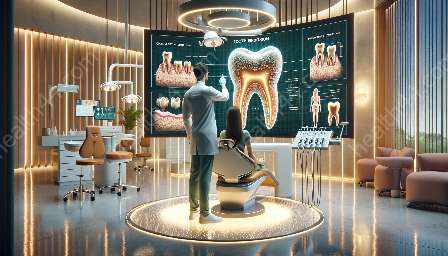Bruxism, commonly known as tooth grinding, can lead to serious tooth wear, erosion, and other dental problems. In this comprehensive guide, we explore the causes, symptoms, and treatments for bruxism and tooth wear to help you better understand and manage these conditions.
Bruxism: The Basics
Bruxism refers to the involuntary clenching, grinding, or gnashing of teeth, often during sleep. It can also occur subconsciously during waking hours. This condition can lead to excessive wear on tooth surfaces, as well as jaw pain and related issues.
Causes of Bruxism
The exact causes of bruxism are not fully understood, but it is often associated with stress, anxiety, and imbalanced bite or jaw alignment. Additionally, certain lifestyle factors such as excessive alcohol consumption and caffeine intake can contribute to bruxism.
Symptoms of Bruxism
Common symptoms of bruxism include worn tooth enamel, tooth sensitivity, jaw pain, headaches, and muscle tightness in the jaw or face. Many individuals with bruxism are unaware of their condition, as it often occurs during sleep.
Tooth Wear and Erosion
Tooth wear and erosion are common consequences of bruxism. The continuous grinding and clenching of teeth can lead to loss of tooth structure, altering the shape and appearance of the teeth. In severe cases, bruxism can result in tooth fractures and damage to dental restorations.
Diagnosing Bruxism and Tooth Wear
A dentist can diagnose bruxism and tooth wear through a comprehensive dental exam, which may include evaluating tooth surfaces, checking for signs of enamel erosion, and assessing jaw function and alignment. X-rays may be necessary to identify underlying damage to the teeth and jaw.
Treatment and Management
Effective management of bruxism and tooth wear often involves a combination of approaches. Dental professionals may recommend the use of mouthguards or splints to protect teeth from grinding, as well as stress-reduction techniques and behavior modification. In some cases, dental intervention such as composite bonding or dental crowns may be necessary to restore damaged teeth.
Prevention and Self-Care
For individuals experiencing bruxism, stress management and relaxation techniques can be beneficial in reducing the likelihood of teeth grinding. Avoiding excessive alcohol and caffeine consumption, as well as practicing good oral hygiene, can also help mitigate the effects of bruxism on tooth wear and erosion.
Conclusion
Bruxism and tooth wear are interconnected dental issues that can have significant impacts on oral health and quality of life. By understanding the causes, symptoms, and treatment options for bruxism and tooth wear, individuals can take proactive steps to manage these conditions and preserve their dental health.


